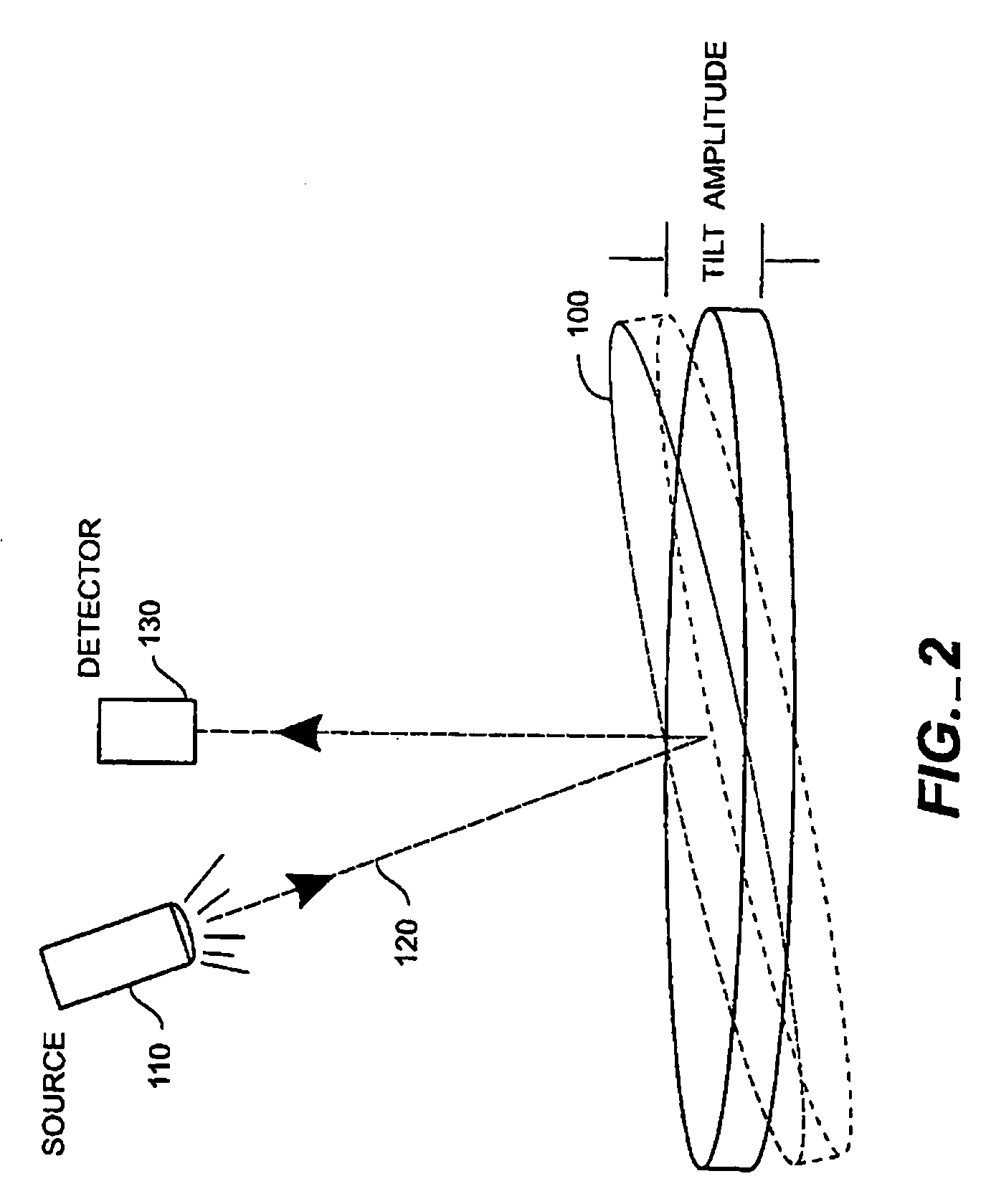Method for detecting vibrations in a biological organism using real-time vibration imaging
a biological organism and vibration imaging technology, applied in the field of detection of vibrations, can solve the problems of harmful to the subject, methods and systems that are not suitable for applications, and generally limited to the measurement of small amplitude vibrations
- Summary
- Abstract
- Description
- Claims
- Application Information
AI Technical Summary
Problems solved by technology
Method used
Image
Examples
Embodiment Construction
[0027] A simple example of a vibrating surface 10 is shown in FIG. 1, wherein light source 20 emits electromagnetic radiation 30, which reflects from the surface 10 and at least in part is detected at a light sensor 40. The light source 20 may in general refer to any suitable source of electromagnetic radiation, and the radiation 30 may be of any of a number of ranges of wavelengths, e.g. visible light, infrared (IR), ultraviolet, etc. Thus, when the term “light” or “optical” is used herein, it will be understood that any desired frequency or range of frequencies of electromagnetic radiation may be used, and the light source may be naturally occurring (e.g. the sun) or artificial (e.g. a laser or a lamp). The sensor 40 is accordingly configured to detect the wavelengths of interest, and as discussed below includes circuitry and software as needed to capture, process, analyze and display frequencies, relative magnitudes and phase information of the detected light substantially simult...
PUM
 Login to View More
Login to View More Abstract
Description
Claims
Application Information
 Login to View More
Login to View More - R&D
- Intellectual Property
- Life Sciences
- Materials
- Tech Scout
- Unparalleled Data Quality
- Higher Quality Content
- 60% Fewer Hallucinations
Browse by: Latest US Patents, China's latest patents, Technical Efficacy Thesaurus, Application Domain, Technology Topic, Popular Technical Reports.
© 2025 PatSnap. All rights reserved.Legal|Privacy policy|Modern Slavery Act Transparency Statement|Sitemap|About US| Contact US: help@patsnap.com



